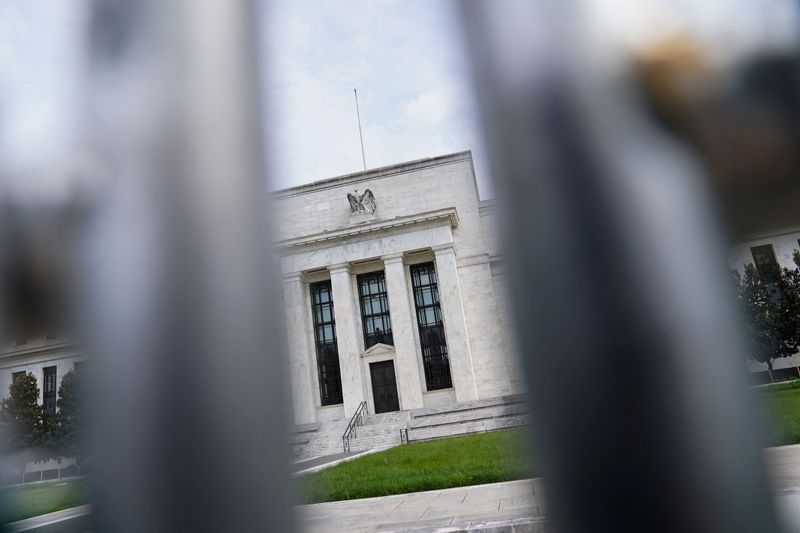(Bloomberg) -- The path of US inflation in 2023 may have more surprises in store after a year in which consumers suffered the biggest cost-of-living hit in 40 years, spurring steep interest-rate hikes by the Federal Reserve and spooking investors.
The November consumer price index due Tuesday, the final report of 2022, is projected to show that while inflation is moderating, it’s running at about three times its pre-pandemic pace. Excluding food and energy, the CPI is seen rising 0.3% for a second month, and 6.1% from a year ago.
The report will reinforce the narrative that inflation has peaked, said Aneta Markowska, chief financial economist at Jefferies LLC. But “there’s still going be some potholes — at least — that we hit in the next few months in terms of the inflation outlook.”
The trajectory of inflation next year will depend on whether there’s further tempering in core goods prices, when and how much rents cool and to what extent wage growth — particularly in services — moderates.
Here’s a look at what economists are expecting for the CPI in November and the months ahead:
Prices of used cars and medical care services are expected to decline, with the latter largely reflecting updated source data that drove a record drop in the health insurance price index in the prior month’s report.
Shelter, however, will remain a big driver of inflation. The October CPI showed a welcome slowdown in rent as well as owners’ equivalent rent, which posted the smallest monthly gain since July. But given the size of the pullback, Oscar Munoz, US macro strategist at TD Securities, said he’s expecting a small bounce in November. Economists see the housing components as a wild card for the month.
Small categories could also see some reverals after outsize moves in the prior month. For instance, the cost of hotel stays, which surged 5.6% in October, are expected to ease or even decline.
Apparel prices will also likely drop for a third month amid high inventory and heavy discounting heading into the holiday season, Munoz said.
Meantime, gasoline prices, which on a daily basis have fallen steadily since early last month, are not only expected to be a drag on the November headline figure, but may also help produce the first decline in CPI since 2020 when the December data are released.
Goods, Housing
Fed Chair Jerome Powell in a speech last month broke down his approach to inflation into three main categories: core goods, housing and core services ex-housing. While his speech dove into the particulars of one of the Fed’s preferred inflation measures — the core personal consumption expenditures price index — it’s helpful to analyze the path of CPI in similar terms.
In the near-term, economists expect to see a continuation of the pullback in prices for core goods. Commodities excluding food and energy dropped 0.4% in October after no change in the prior month.
The imbalance between the supply and demand for goods has been a key driver of inflation, but improving supply chains and softer demand at home and abroad have helped to stabilize prices.
That said, declining prices for used cars and trucks have been a key driver of the easing in the core CPI in recent months. But a stabilization of those prices — rather than outright declines — could ultimately push monthly core readings from 0.3% back up to 0.4% around March, Markowska said.
That potentially raises the risk that the Fed “might have to go again in May unless there’s data suggesting that the economy is really rolling over,” she said.
Omair Sharif, founder of Inflation Insights LLC, emphasized the importance of the shelter components and when and how quickly they come down. In addition, he expects the slowdown in core services costs will be faster than many people expect.
“This year we’ve been caught off guard by a lot of upside surprises,” Sharif said. But next year, “any big surprise factors should be more to the downside.”
Base effects paired with goods deflation is expected to lead to a rapid descent in the CPI in the first half of the year. After that is when things start getting complicated.
Near the middle of next year, Carl Riccadonna, chief US economist at BNP Paribas, expects CPI to fall from roughly 8% currently to 4%. But “cutting it in half again — from 4 to 2 — that’s the difficult task,” he said on a webcast earlier this month.
Services Ex-Housing
Ultimately, the key to when inflation returns to the Fed’s target is core services excluding housing. And because of the importance of wages in these services, economists will be watching a wide variety of pay metrics. While there are some pockets of weakness in the labor market, overall, it remains remarkably strong.
“When you’re thinking about where inflation’s going to be six to 12 months from now, I think it really comes down to wages,” Markowska said.
